Tautai MatagofieWonderful Navigator
Fatu Feu'u
Type
- Mural
Medium
- Paint
- Hardboard/HDF
Dimensions
- H2370 x W13,200mm (total of 13 panels ranging between W1220 and W310mm, mounted in 5 sections: W1540mm, W3360mm, W3350mm, W3360mm and W1600mm)

Fatu Feu'u, ‘Tautai Matagofie’ (Wonderful Navigator), (1990), Aotea Centre, Tāmaki Makaurau Auckland
Image: Bronwyn Holloway-Smith, Public Art Heritage Aotearoa New Zealand, 2023
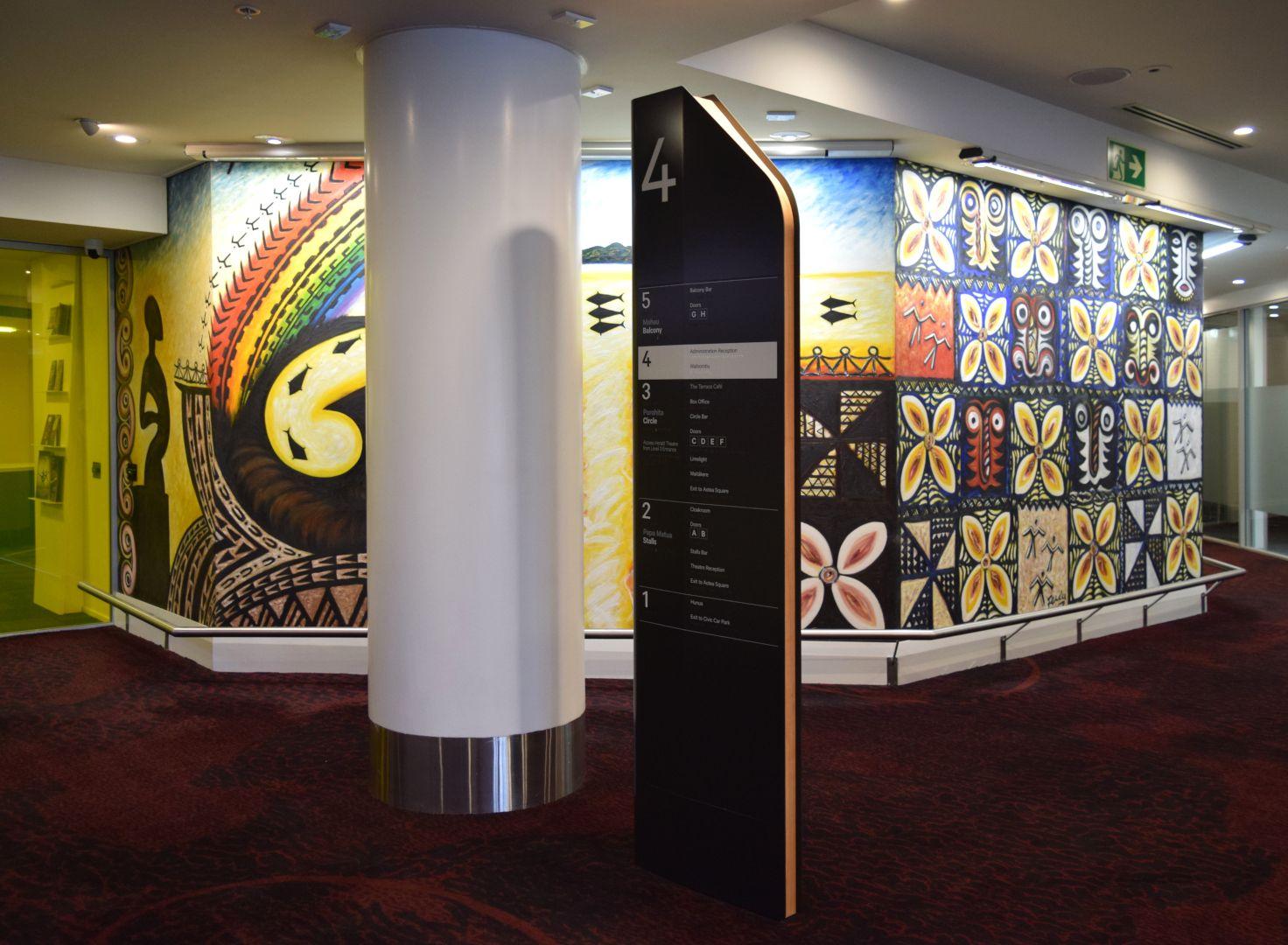
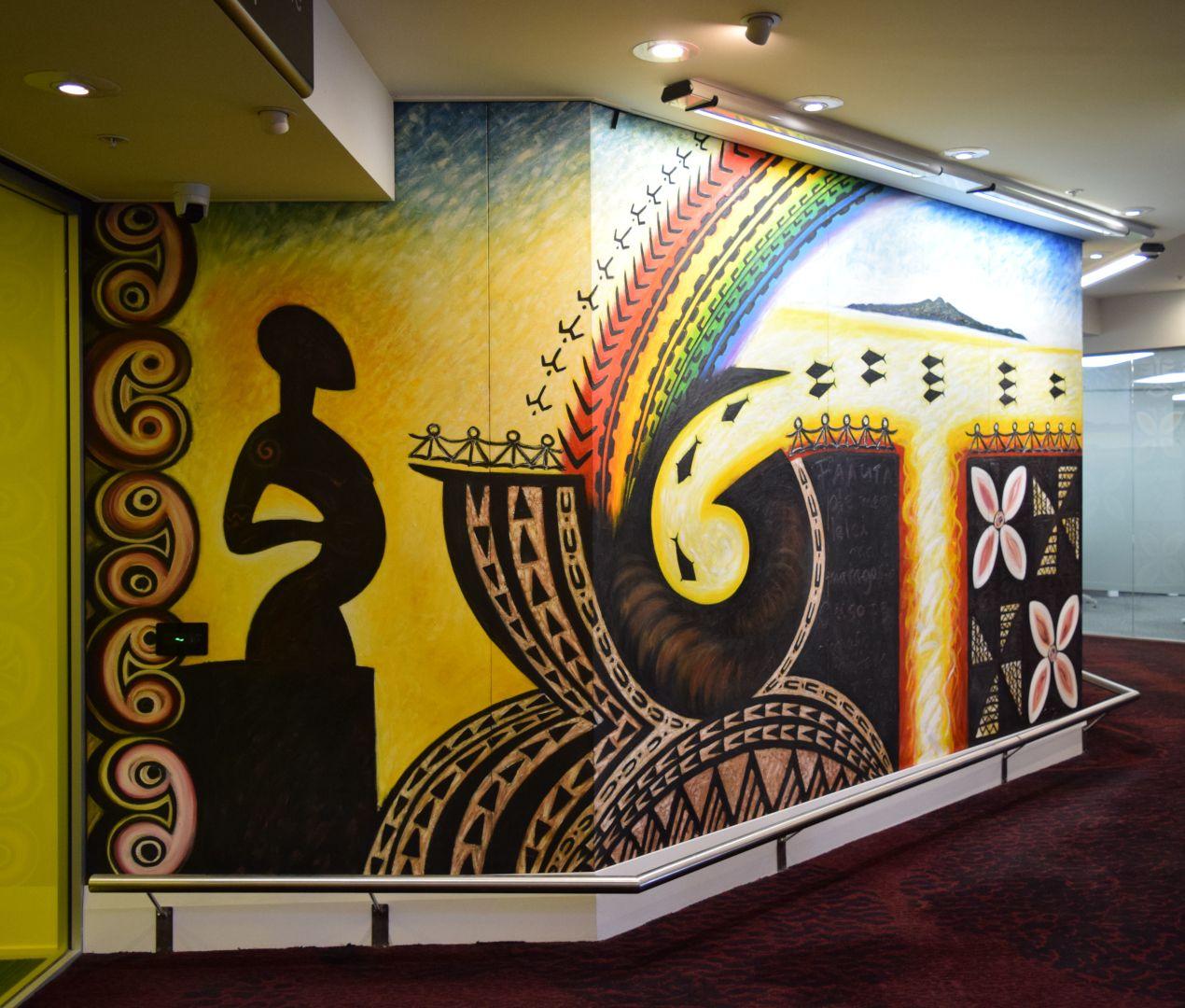
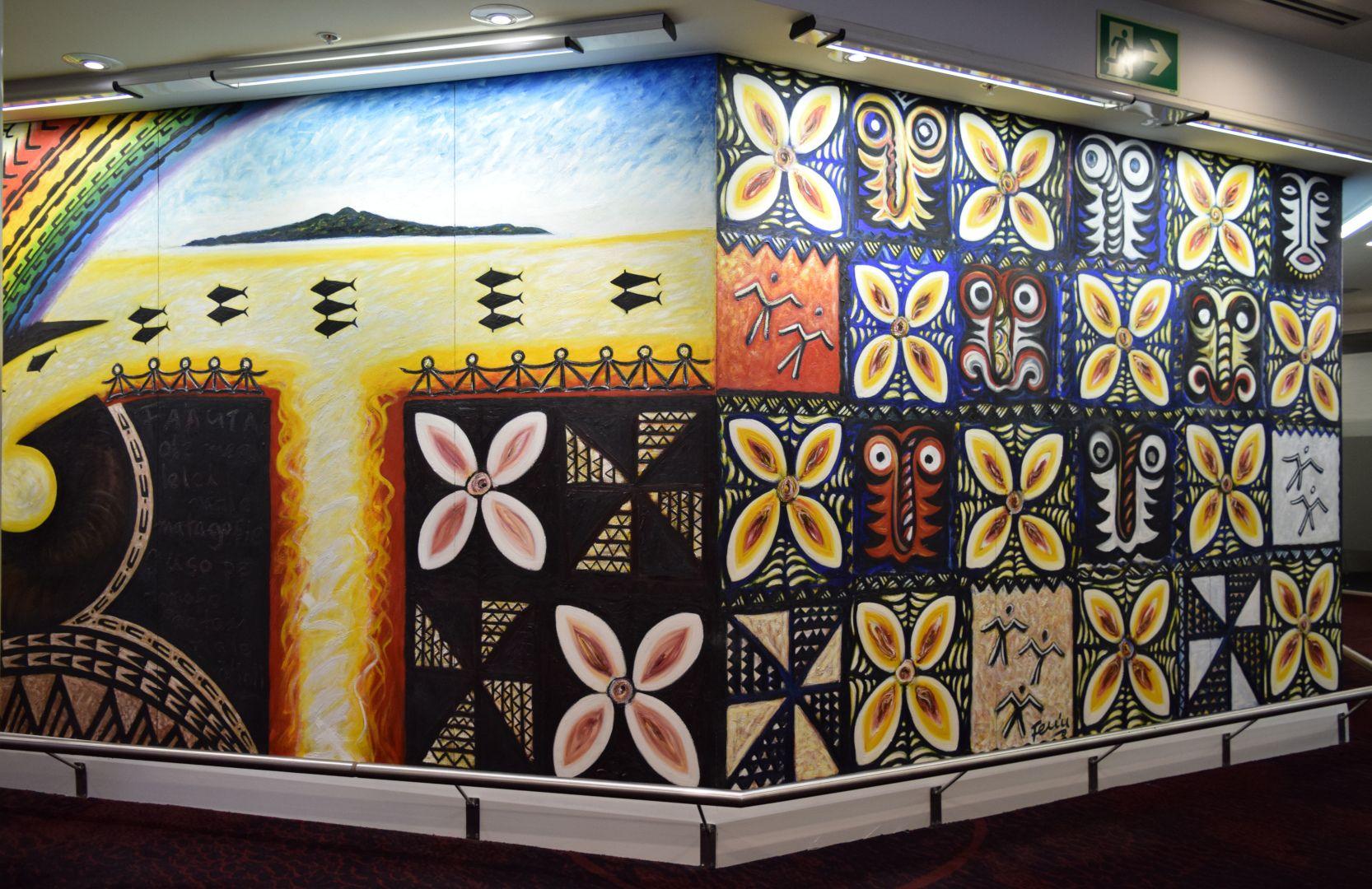
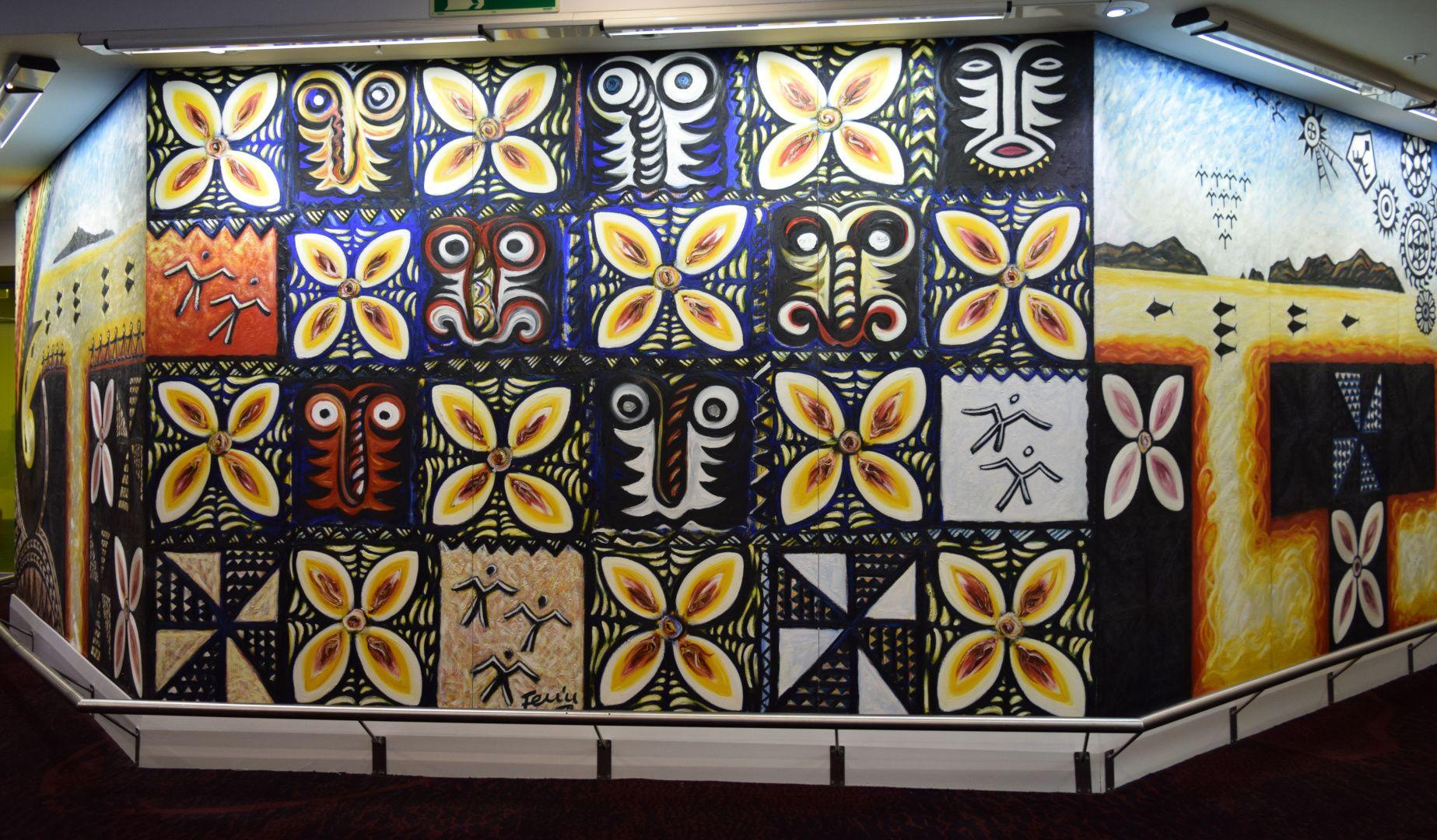
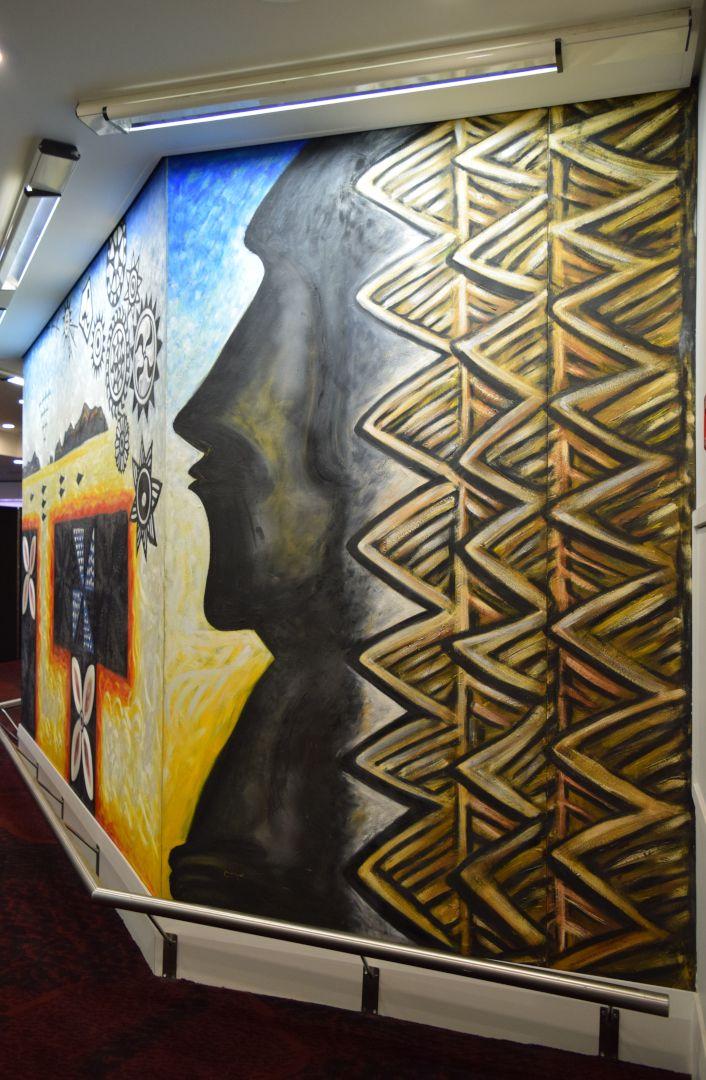
- DETAILS
- MAP
Description
"Feu'u's vision for this mural is to show people from all over the Pacific coming to New Zealand, with Auckland as the unification point for them. It is also about the people of Auckland making their contribution to the city, by creating an awareness of sharing and respecting each other's cultures and resources.
“The imagery derives from myths and legends of ancient Samoa and the Pacific. Symbolic motifs are combined with colours significant to ancient Pacific seafarers and navigators. Pale blue/grey signifies north, white is east, ochre is south, and red is west.
“The journey portrayed in the 32 square metre mural is across the Pacific from east to west. In the east is the moai, an Easter Island sculpture with the pola (house blinds) drawn behind him. Behind him is a Polynesian sacrificial altar with one female and one male motif, and fish skeletons left over from a farewell sacrifice.
“The sun and star motifs signify navigational aids used by Pacific peoples, while the general migration to Aotearoa is guided by the gogo or frigate bird, symbol of spiritual ancestors. The fish motif, atu, signifies one of the staple Pacific foods.
“The centre panel represents central Polynesia - Tonga, Niue and Samoa as depicted in siapo (tapa cloth) and lapita (pre-Polynesia pottery) motifs. Frangipani flowers provide an essential symbolic female balance to the male elements of spirituality that are shown. All these migrations come together at the end of the rainbow where the koru (spiral) is pictured. It symbolises the basin of the Waitemata Harbour, and Rangitoto's familiar form is easily recognisable. To the left of the koru is a female Maori sculpture, seen here as the keeper of Aotearoa, accepting into Auckland brothers and sisters from Pacific countries." "Fa'auta! Ole mea lelei ma le matagofie o uso pe a nonofo fa'atasi ma le olioli. (Behold! It is great and wonderful for brothers and sisters to live together in harmony. (Fatu Feu'u)"
Source: ‘Aotea Centre: Works of Art’, pp.20-21
This portrait was one of a group of works commissioned for the Aotea Centre.
—
“Ko te pūtake o tēnei pikitia pakitara he whakakotahi i ngā wheako o te hekenga mai a ngā iwi o Te Moana Nui A-Kiwa ki Aotearoa, me te whakatairanga i te whanaungatanga i waenga i ngā ahurea me te whakaute i waenga i ngā rōpū taura here. Mā te whakahami i ngā mātātuhi pūrākau, pakiwaitara o Hāmora me Te Moana Nui A Kiwa, e whakatakoto ana te pikitia pakiwaitara i te haerenga mai i te taha rāwhiti (ko te tae mā) o Te Moana Nui a Kiwa ki te uru (arā, te tae whero). Ko te tae e tohu ana i te raki he kororā, ko te tae e tohu ana i te tonga he kōkōwai. Ko ngā tohu whakatere pēnei i te rā, i ngā whetū me te manu gogo e kōrero ana mō ngā haerenga ā-moana a ngā ika.
“Ko te whakapakoko moai o Rapanui e noho ana ki te rāwhiti, kei pūwaenga o Poronīhia e noho ana he siapo (he pūweru tapa) me ngā waitohu uku Lapita o nehe rā. Ko te koru kei te pito o te āniwaniwa kei te whakakopani i te haerenga a te katitiro ki Aotearoa nei: ina rā ko te koru tonu te wahapū o Waitemata e tāparepare ana i te motu o Rangitoto.”
See also:
- Tara Werner, Karen Scherer, Katherine Findlay, Aotea Centre Women's Committee et al., ‘Aotea Centre: Works of Art’, (Aotea Centre: 1992)
- Tautai Matagofie, Auckland Live website
